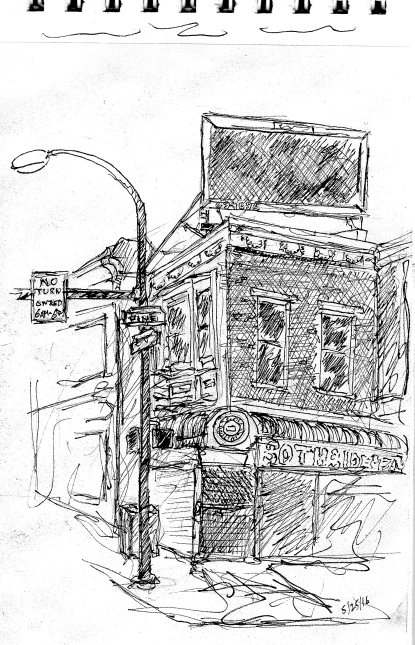Not a bad day. Two little poems. Three hours drawing. Grocery shopping, which I’ve been putting off (I HATE grocery shopping… selections in the nearest supermarket are so boring, and I can’t afford either time or money to go to the Reading Terminal or the Italian Market every time I run low on food). The local food co-op, Mariposa, is for peeps with way more money than me).
I was happy to have written new poems… and surprised to see that I’ve written more than I’d remembered the last two years… and that they didn’t seem all that bad. I got to thinking about this… about what lasts in my estimation.
I like a painting when I finish it… or I’d either keep working at it, or give up and paint over it and start again. Many, if I like them at first, I’ll like for a few days… some for weeks, or months. Very very few will I like enough in a year or so, that I won’t be ready to give them a coat of gesso and use the surface for something new.
I haven’t had to buy new canvas or stretchers in months!
Water colors, metal points… similar, but I can’t paint over the water colors, and I’ve not been making metal points that long–though several of these I’ve already relegated to the scrap heap and deleted photos of them from my blog.
With poems, it’s different. I very seldom feel more than tolerance for their existence when I finish them (though, strangely–if I accept them at all–I want to share them right away instantly-often to my embarrassment). But I’ll find poems I wrote years ago, and thought next to worthless when I wrote them… and think… wow! I wrote that? That’s not half bad!
I’m glad it takes so much less space to keep old poems, than old paintings…








